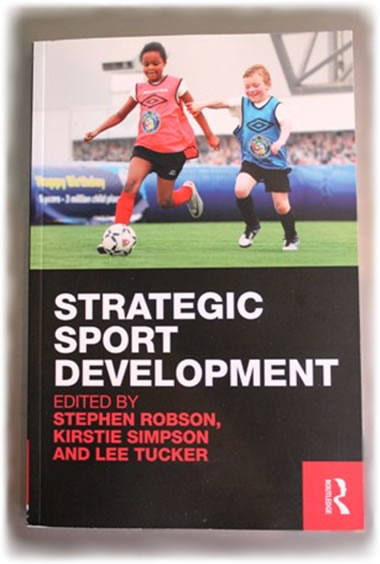
Looking for a new Eady: a text book review
In 1993 John Eady wrote the book that defined sports development. Twenty years on
Mick Owen reviews a new text, Strategic Sports Development, to see if the old curmudgeon can finally step aside.

The latest pretender to the throne of the man The Leisure Review delights in calling ‘the curmudgeon’s curmudgeon’ is a 272-page tome from the Routledge stable, edited by not one but three northern academics: Stephen Robson, Kirstie Simpson and Lee Tucker. The first and last of these ply their trade at Leeds Metropolitan University, while Simpson teaches at the University of Chester and at this point it as well that we declare an interest. Your reviewer, gentle reader, knows these people, or at least the first two, and likes them; which simply means that the term ‘critical friend’ becomes immediately apposite. I want to like this book.
Unfortunately the first thing which strikes the reader on picking up the book has nothing to do with the quality of the writing and editing – the crux of the decision to buy or not to buy; it is to do with the design, which is all a bit clunky. The capital letter is best left to start sentences and signify proper nouns, you know, Mr Routledge. Overuse in book titles, section headings and author’s names gives a book a foursquare, stolid feel and the lovely glossy pages and the funky big page numbers – which should give a sense of flow through the ideas in the text – lose their impact. While not ‘design disasters’, when added to a cover image of two children playing soccer – one black, one white; one male, one female – the overall impression is that of dull worthiness rather than ground-breaking relevance.
While we are concentrating on the ‘critical’ and not on the ‘friend’ we also need to consider the foreword. It is written by David Morby, a name new to your reviewer. Despite being a veteran of seven National Sports Development Seminars, four as part of the organising group, and having been the business development manager for the National Association for Sports Development for five years, I am unfamiliar with Morby’s name. Perhaps the fact that he was once president of the Institute of Sport and Recreation Management (ISRM), a body whose commitment to sports development as a profession was linked more to the revenue potential it represented than the recognition of the budding sector’s need for a leg-up, explains the lack of name recognition.
It will also explain, perhaps, why Morby is keen in the last of his five paragraphs to name check and promote the role of the Chartered Institute for the Management of Sport and Physical Activity. He believes the cobbling together of this latest professional body for the sector has brought about “enhanced opportunities for quality CPD and career development” and will “enable sport development to gain the professional credibility is [sic] so richly deserves”.
To be fair, Robson at al seem to set more store by the development of the national occupational standards for sport development in 2010 and by the growth of specific honours degrees in the subject as indicators of the existence of a profession but their reference of CIMSPA with no mention of NASD or even ILAM – the body, lest we forget, that published Eady’s work – is remiss and may prove misguided if CIMSPA fails, as some in the industry are predicting, thus precipitating a hurried rewrite.
Once into the body of the work, however, all these admittedly petty objections become irrelevant. Here are chapters written by experts in their field and for an audience that needs the guidance. Why sport development needs a strategic approach, how you go about translating the skills of strategic thinking into a sport development context and what specific issues become important when you do – and there are whole chapters on partnerships, politics, leadership, and monitoring and evaluation – are all addressed in comprehensive detail.
At points the debate does become a tad arcane and only people steeped in the semiotics of the sector will truly appreciate the argument for the use of “sport development” rather than “sports development” but words are important. This reviewer would prefer to see fewer words like “problematise” being employed in an English text but perhaps that is one of the crosses a book about strategic thinking, so heavily influenced by our transatlantic cousins, must bear.
Whether your job description has you down as a sports development officer or you aspire too be a sport development practitioner when you finish college, or even if you have to teach a course in a subject which has broadened and acquired real depth of expertise over the forty years that the two words were first put together to mean getting people to play sport, you will find this book of use. Buy it.
Mick Owen is managing editor of The Leisure Review.
The Leisure Review, May 2013
© Copyright of all material on this site is retained by The Leisure Review or the individual contributors where stated. Contact The Leisure Review for details.
![]() Download a pdf version of this article for printing
Download a pdf version of this article for printing